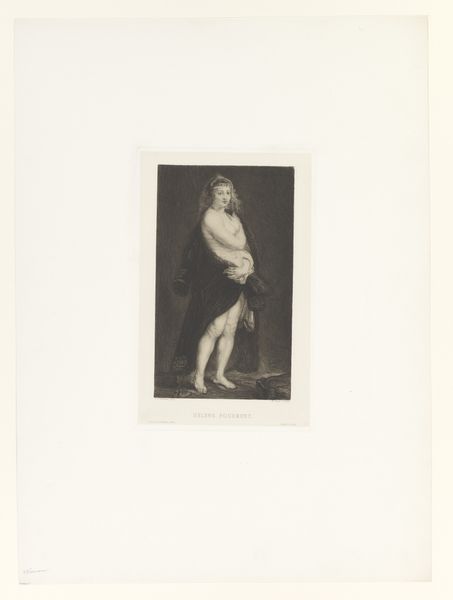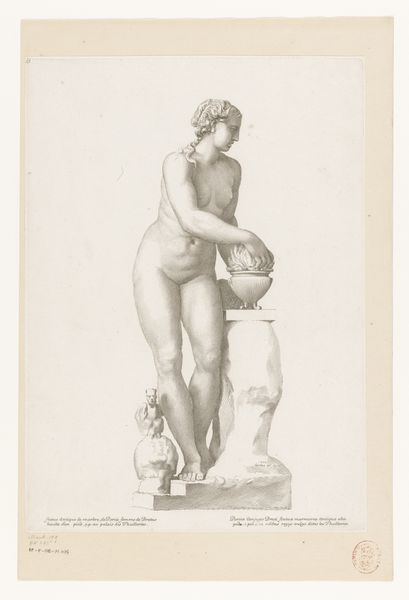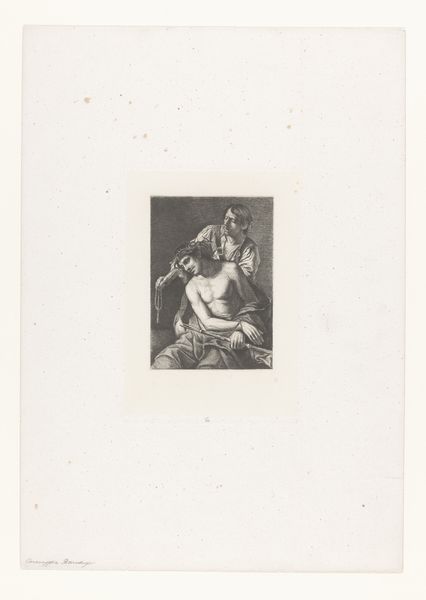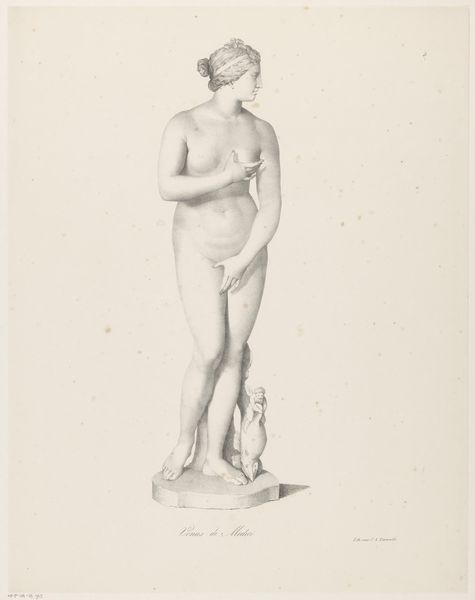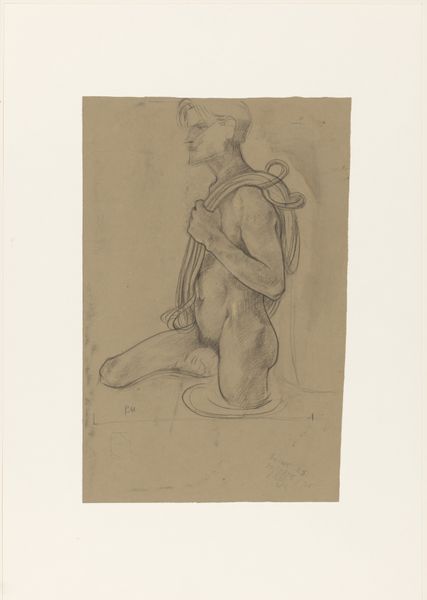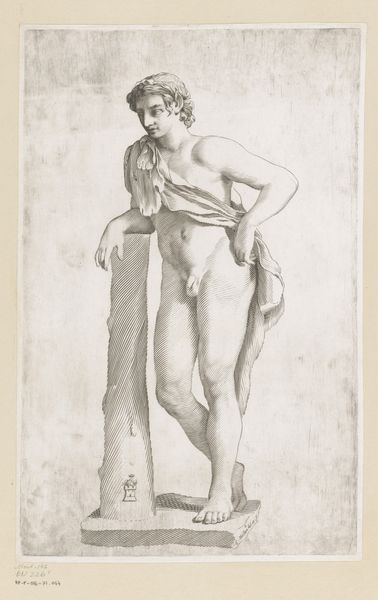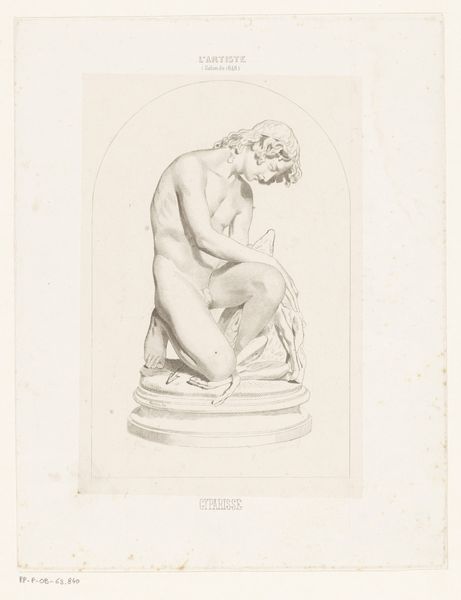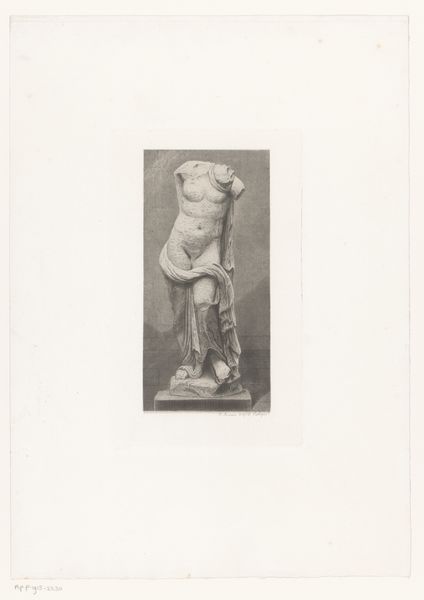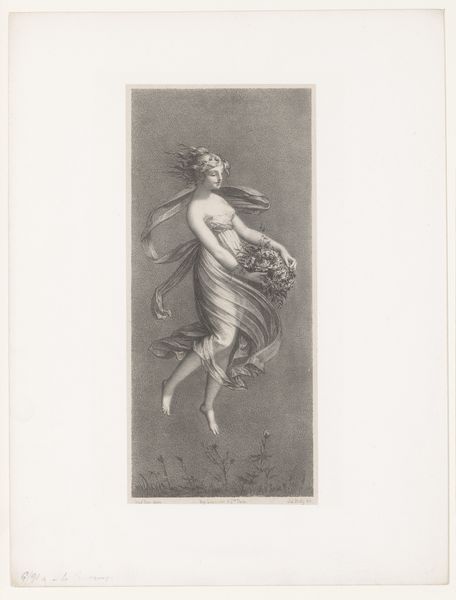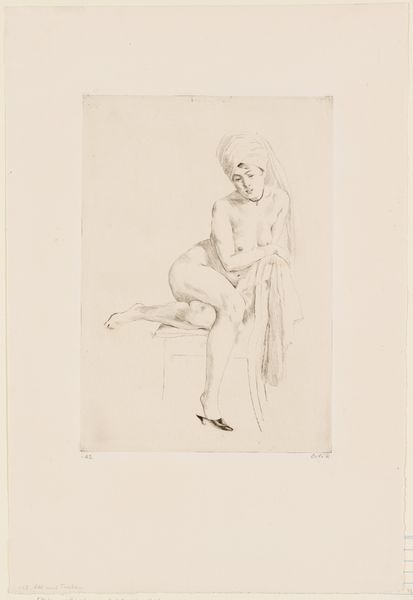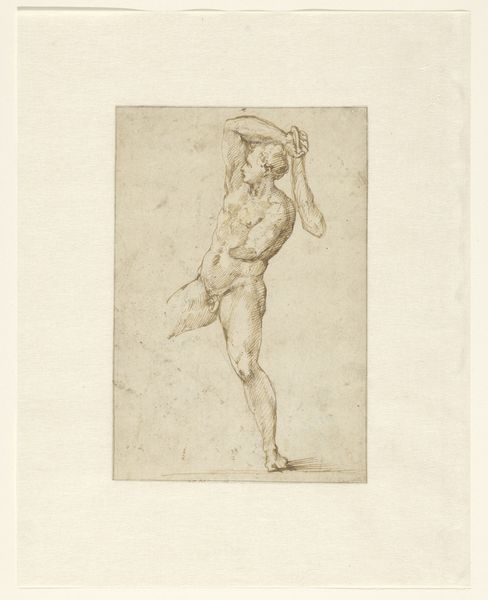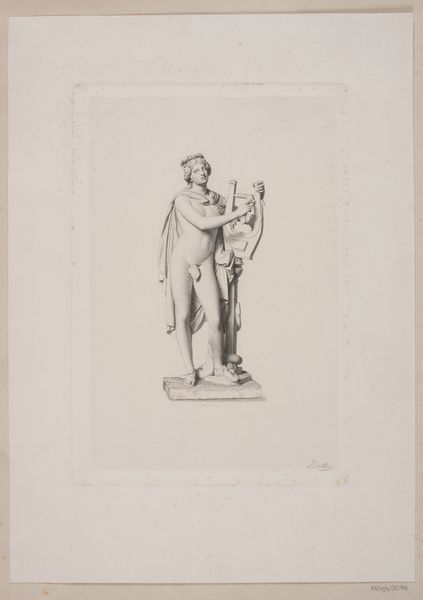
drawing, pencil
#
portrait
#
drawing
#
neoclacissism
#
pencil drawing
#
pencil
#
portrait drawing
#
academic-art
#
nude
Dimensions: height 177 mm, width 116 mm
Copyright: Rijks Museum: Open Domain
Curator: Before us hangs a pencil drawing by Baron Dominique Vivant Denon, made between 1787 and 1794. It’s titled "Napolitaanse vrouw met opgetrokken rok" – A Neapolitan Woman with her skirt lifted. Editor: It’s a pretty intimate portrait, rendered in delicate lines. I am drawn to the immediacy of it, almost as if we’ve caught this woman unawares. Curator: Indeed. Denon, a figure of the Enlightenment and later an associate of Napoleon, was a keen observer of social customs. Drawings like these, often created en plein air, served as studies, glimpses into everyday life that, whilst filtered through the artist's gaze, depicted what he saw as characteristic of different peoples across Europe. Editor: What interests me is the physical act of drawing itself. Pencil on paper; it’s a remarkably direct transfer of thought and observation. You can almost feel Denon's hand moving across the page, the varying pressure creating depth and texture. The materials speak to the ephemeral nature of the moment he captured. Curator: I agree, there is an immediacy to this medium. But, of course, Denon also occupied a specific place in the social hierarchy, and it is reflected in what and how he depicted such subjects. Note the context within which these were often displayed or discussed – private collections or academic circles. Consider also the act of exhibiting or reproducing such drawings. It inherently involves decisions about accessibility, determining who can access, interpret, and potentially appropriate the imagery, transforming it from a casual sketch into a circulated and perhaps objectified image. Editor: That raises an important question. To what extent did the subject—likely from a working-class background—have agency over her depiction? Was this commissioned? Did she even know she was being sketched? These things matter when considering the layers of power and the economic context of artmaking at the time. Curator: Exactly. And that consideration provides deeper insight into both the art itself and the period in which it was created. The Rijksmuseum holding this artwork is part of that story. It asks us to consider what responsibility it has when choosing which artwork will become part of their collection. Editor: Yes, considering these aspects enriches the viewing experience immensely, going beyond aesthetics into the realm of ethics and production. Curator: Indeed, it gives a much broader, deeper resonance when considering art history's function, institution, and, frankly, the power structures intrinsic to artistic practice. Editor: For me, this pencil drawing highlights the physical relationship between artist, materials, subject and viewer – that relationship makes all the difference.
Comments
No comments
Be the first to comment and join the conversation on the ultimate creative platform.


